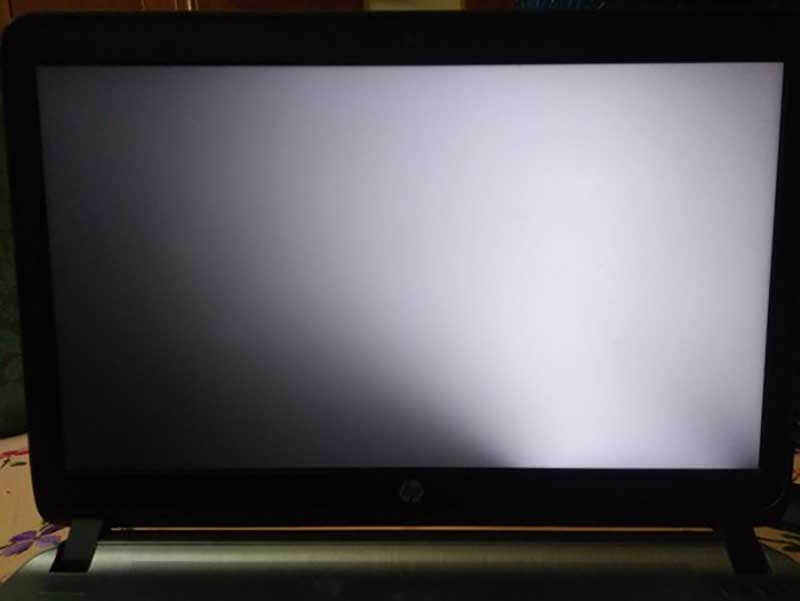General
Navigating the Graphic Designing Course Journey
Are you fascinated by the world of graphic design? Do you find yourself admiring logos, posters, and advertisements, wondering how they were created?
Look no further! This blog post is designed to guide you through the exciting journey from novice to pro in the graphic designing course.
We’ll explore everything from what graphic design is, its History, types of designs, software used for designing, techniques applied and finally, how to become a professional designer.
So buckle up as we take an exhilarating ride into the world of graphic design!
What is graphic design?
At its core, graphic design is the art of creating visual content to convey messages or ideas through a combination of text and images. It involves using various elements such as typography, colour theory, layout design, and other creative techniques to communicate with audiences.
Graphic designers work across different industries, including advertising, marketing, publications, and web development. They create designs for logos, brochures, posters, websites and mobile applications. The goal is always to capture the attention of viewers while conveying important information effectively. Join a digital marketing Instittute now.
In essence, graphic design is not just about making things look visually stunning but also finding innovative ways to showcase compositions that are both functional and aesthetically pleasing at the same time.
A successful designer understands how good use of colour schemes will draw attention from potential customers while adhering strictly to brand guidelines.
The world of graphic designing has undergone tremendous changes over the years, with technological advancements leading innovations in software tools used by designers.
Understanding these tools can enhance creativity allowing designers to use more efficient methods for their creations without sacrificing quality or impact on their target audiences.
The different types of graphic design
Graphic design is a vast field that encompasses different types of design. Each type requires unique skills, creativity, and techniques to create visually appealing designs for various purposes.
One type of graphic design is branding design. It involves creating a consistent visual identity for a company or product by developing logos, typography, colour schemes and other brand elements.
Another type is web design which focuses on creating user-friendly interfaces for websites and mobile apps using layout, graphics, and typography.
Print design involves designing materials such as brochures, posters and business cards that are printed on paper or other physical mediums. This often includes choosing the right colours and fonts to ensure high-quality printing results. Join a graphic designing course now.
Packaging Design revolves around creating packaging labels with eye-catching visuals that will grab customer attention in-store aisles amidst competition from rival brands.
Finally, we have Motion Graphics – an art form combining graphic design principles with animation techniques to produce engaging video content. This form of graphic designing has recently gained popularity amongst digital marketers looking to create memorable ads across social media platforms through animated content.
Graphic designers use their talents to bring ideas into reality by utilising tools like software applications (Adobe Photoshop/ Illustrator), technical skills (colour theory), artistic flair and more!
The History of graphic design
The History of graphic design dates back to the prehistoric era when early humans used symbols and drawings to communicate. However, it was not until the invention of the printing press in 1440 that graphic design took a significant leap forward.
During the Industrial Revolution, advances in technology allowed for mass production of printed materials which led to an increased demand for skilled designers. The Art Nouveau movement emerged at this time and heavily influenced graphic design with its intricate designs and flowing curves.
In the early 20th century, the Bauhaus school became prominent, introducing simplified geometric shapes and sans-serif typography into designs. This style would later influence modernist movements such as Swiss Design.
The mid-20th century saw a rise in consumer culture, leading to advertising becoming a dominant force in graphic design. Pop art emerged during this period using bold colours and imagery from popular culture. Look no further than Selecta Sol’s Graphic Designing Course.
Today’s digital age has brought about new techniques and software tools that have revolutionised how we create designs. As designers continue to push boundaries, it is exciting to see what new innovations will shape the future of graphic design.
The different software used in graphic design
Graphic design is a wide field that requires different software depending on the type of project being worked on. Nowadays, there are numerous tools available to graphic designers ranging from free to paid options.
One popular tool used in graphic designing is Adobe Photoshop which allows designers to edit and manipulate images. It offers a range of features, such as layers, masks, filters and brushes, that can be used to create stunning visuals.
Another commonly used software is Adobe Illustrator, which focuses more on vector graphics – graphics made up of geometric shapes rather than pixels. This software makes it easy for designers to create logos, icons and other illustrations with precision.
In addition, InDesign by Adobe offers an intuitive page layout experience for print or digital design projects, while Sketch provides users with an interface specifically designed for web design projects.
Other notable mentions include CorelDRAW Graphics Suite, which offers similar features as Adobe Illustrator but at a lower cost; Canva, which provides easily customisable templates ideal for beginners; and Procreate, which is widely used in creating digital artwork like illustrations and comics.
Ultimately, choosing the right software depends on the project requirements and personal preference. As such, it’s important for any aspiring designer to explore different options before settling on one particular tool or suite.
The different techniques used in graphic design
Graphic design is a field that requires creativity and innovation. It involves using various techniques to create designs for different purposes, such as advertising, branding, and marketing.
One of the most commonly used techniques in graphic design is typography. This technique involves using fonts in creative ways to convey messages. Designers can use different fonts, sizes, colours, and spacing to make their designs more visually appealing.
Another important technique in graphic design is colour theory. Colours play a crucial role in how we perceive things visually. Designers use colour combinations to evoke certain emotions or convey specific meanings. Look no further than Selecta Sol’s Graphic Designing Course.
Composition is also an essential technique used by graphic designers. Composition refers to how elements are arranged on a page or screen. A good composition can make a design more effective by drawing attention to the right places and creating balance.
Image manipulation is another popular technique used by graphic designers. With the help of software like Adobe Photoshop or Illustrator, designers can enhance images or create new ones altogether.
Motion graphics have become increasingly popular over recent years as video content has exploded across social media platforms; this animation-based approach allows brands’ messaging through storytelling with moving elements added into still images.
These are just some of the many techniques that graphic designers employ when working on projects – each project may require several techniques combined together for optimal outcomes depending on its objectives!
How to Become a graphic designer
To become a graphic designer, one must have creative and artistic skills. A degree in graphic design can be helpful, but it is not necessary. There are many online courses available that teach the fundamentals of graphic design.
Additionally, building a portfolio is crucial for any aspiring graphic designer. This can be achieved by taking on freelance projects or creating designs for personal projects.
Networking with other designers and professionals in the industry can also help you gain exposure and opportunities to work on bigger projects.
It’s important to stay up-to-date with the latest trends in the industry and continually improve your skills through practice and experimentation with new techniques and software programs.
Having good communication skills is essential as you will need to communicate effectively with clients to understand their needs and deliver high-quality designs that meet their expectations. Look no further than Selecta Sol’s Graphic Designing Course.
Becoming a successful graphic designer takes hard work, dedication, creativity, technical know-how, networking skills – but most importantly – passion!
Conclusion
To sum it up, graphic design is an exciting and versatile field that offers endless opportunities for creativity and self-expression. From typography to branding to digital illustration, there are so many areas of expertise within this field that you can explore.
Whether you’re a complete beginner or have some experience under your belt, there’s always something new to learn in the world of graphic design. By familiarising yourself with different software and techniques, practising regularly, and seeking out feedback from others in the industry, you’ll be well on your way to becoming a skilled graphic designer.
Remember that every journey starts with a single step – don’t be afraid to take yours today! With dedication and hard work, anyone can turn their passion for graphic design into a successful career.
So what are you waiting for? Enrol in a Graphic Designing Course today and start creating beautiful designs that inspire others!
Learn more from: ncespro
General
qaAWSDFGV HJJKLLL;M L’
General
Animated Mississippian Maize Celebrates Native Farming

Farming has always played a significant role in Native American culture. Animated Mississippian Maize captures this rich history in a visually engaging way. It showcases how ancient communities relied on maize for survival and trade. This animation connects the past to the present, helping viewers appreciate indigenous agricultural expertise. Simple storytelling and digital tools bring forgotten traditions back to life. Let’s explore how this animation sheds light on Native farming.
Key Takeaways
- Animated Mississippian Maize preserves indigenous farming traditions.
- It highlights the deep connection between Native people and agriculture.
- The animation brings history to life for modern audiences.
- Understanding Mississippian maize farming enriches historical knowledge.
- Digital tools help spread awareness of traditional farming techniques.
The Importance of Maize
Maize was more than just a crop—it was a lifeline. Indigenous communities used maize for food, trade, and ceremonies. Animated Mississippian Maize highlights how farming techniques evolved, ensuring sustainability.
“Maize farming shaped the economy and culture of Mississippian societies.”
By studying these methods, we gain insight into efficient and eco-friendly agriculture. Traditional planting strategies, like the Three Sisters method, remain valuable today.

Farming Techniques in Animation
Animation breathes life into historical knowledge. Animated Mississippian Maize uses visuals to demonstrate planting, harvesting, and storage. It highlights how indigenous farmers cultivated maize alongside beans and squash. These techniques improved soil fertility and ensured food security.
“Traditional farming methods emphasize sustainability and resourcefulness.”
Educators can make history more engaging by incorporating animation. This approach helps students and researchers understand the wisdom behind early agricultural practices.
Cultural Significance of Maize
Maize wasn’t just food; it was part of rituals and storytelling. Animated Mississippian Maize explores how indigenous people saw maize as a sacred gift. It played a role in ceremonies, myths, and social structures.
Key cultural aspects include:
- Spiritual Meaning: Many tribes viewed maize as a symbol of life.
- Community Bonding: Farming strengthened social connections.
- Oral Traditions: Stories about maize passed knowledge to future generations.
Understanding these traditions helps preserve indigenous heritage and respect their contributions to agriculture.
How Animation Educates Viewers
Digital tools make learning accessible. Animated Mississippian Maize simplifies complex historical concepts. It helps students visualize how farming shapes communities.
Benefits of Animation in Education
- Engages young learners with colorful storytelling.
- Provides a visual timeline of agricultural development.
- Connects history with modern sustainability practices.
With animation, Native farming traditions reach a broader audience. This ensures the preservation of cultural knowledge.
Modern Lessons from Ancient Farming
Traditional maize farming techniques still hold value today. Animated Mississippian Maize teaches modern farmers about soil health, crop rotation, and organic methods. These ancient practices align with sustainable farming goals.
Key Lessons
- Companion Planting: Boosts crop growth naturally.
- Soil Conservation: Prevents erosion and improves fertility.
- Natural Pest Control: Reduces the need for chemicals.
By studying indigenous methods, we can develop more eco-friendly farming systems.
Conclusion
Animated Mississippian Maize is more than just a visual story; it is a bridge between past and present. It honors Native farming traditions and educates audiences about sustainable agriculture. As we explore the wisdom of ancient farmers, we gain valuable insights into modern farming and cultural appreciation.
FAQs
1. Why is maize important in Native history?
Maize was a staple crop that supported entire communities. It played a crucial role in food, trade, and cultural traditions.
2. How does animation help preserve history?
Animation makes complex topics engaging and accessible. It visually demonstrates traditional farming techniques.
3. What farming methods did Mississippian cultures use?
They used techniques like the Three Sisters planting, crop rotation, and organic soil enrichment.
4. Can we apply these farming methods today?
Traditional methods promote sustainability, soil health, and efficient crop production.
5. Where can I watch Animated Mississippian Maize?
Educational resources and animations are found in museums, history websites, and Indigenous organizations.
General
Severe Duty Brush Cutter 06488 The Best for Vegetation

Managing thick vegetation and thorny brush requires a powerful tool. The Severe Duty Brush Cutter 06488 is designed to handle dense overgrowth, making land clearing easier and more efficient. Whether dealing with overgrown fields or rugged landscapes, this brush cutter ensures smooth operation. Its durable construction and sharp blades allow users to tackle challenging jobs effortlessly. This guide explores its features, benefits, and why it’s the best choice for heavy-duty land clearing.
Key Takeaways
- Severe Duty Brush Cutter 06488 is built for heavy-duty vegetation clearing.
- It provides durability, efficiency, and high performance for demanding jobs.
- It is ideal for farmers, landscapers, and landowners needing a reliable cutting tool.
- It features sturdy blades, a powerful motor, and ease of use.
- It is an excellent investment for maintaining large properties.
What is Severe Duty Brush Cutter 06488?
The Severe Duty Brush Cutter 06488 is a high-powered cutting tool for removing thick vegetation, shrubs, and small trees. Built with industrial-grade materials, it provides long-lasting performance in challenging environments.
Features of Severe Duty Brush Cutter 06488
- Heavy-duty steel frame for maximum durability.
- Sharp, high-performance blades for cutting through dense vegetation.
- Powerful motor that ensures efficient cutting.
- Easy attachment system for seamless connection to machinery.
- Safety features to protect the user during operation.

Benefits of Using Severe Duty Brush Cutter 06488
High Cutting Efficiency
The Severe Duty Brush Cutter 06488 is designed for maximum cutting performance. Its sharp blades and high-torque motor allow users to cut through thick brushes without difficulty.
“A powerful tool like this saves time and effort, making land clearing a breeze.”
Built for Tough Conditions
Unlike standard brush cutters, this model is specifically built for harsh conditions. It delivers reliable results on rocky terrains, dense fields, or wet landscapes.
Easy to Operate
This brush cutter has user-friendly controls, making it simple for professionals and beginners.
Long-Lasting Durability
With its reinforced steel frame and high-quality materials, this brush cutter ensures years of performance with minimal maintenance.
How to Use Severe Duty Brush Cutter 06488
Using the Severe Duty Brush Cutter 06488 correctly is essential for safety and efficiency. Follow these steps:
Setup and Safety Check
- Inspect the brush cutter for any damages or loose parts.
- Ensure all safety gear (gloves, goggles, boots) is worn.
- Attach it securely to the machinery.
Operating the Brush Cutter
- Start the machine and gradually increase speed.
- Move-in controlled smooth motions to prevent damage.
- Avoid rocky areas that may damage the blades.
“Proper operation ensures the longevity of your brush cutter and keeps you safe.”
Maintenance Tips
- Clean blades after every use to prevent rust.
- Oil moving parts regularly to reduce friction.
- Store in a dry area to maintain durability.
Why Choose Severe Duty Brush Cutter 06488?
Superior Performance
Its high-power motor and efficient design make it the best tool for clearing thick vegetation.

Versatility
Suitable for farms, landscapes, construction sites, and forestry, making it a multi-purpose tool.
Cost-Effective Investment
While it may seem like a significant investment, its long lifespan and efficiency save money in the long run.
“Investing in a high-quality brush cutter means fewer repairs and replacements.”
Conclusion
The Severe Duty Brush Cutter 06488 is an essential tool for those needing a robust, durable, and efficient solution for land clearing. Its muscular build, high performance, and easy handling make it one of the best brush cutters available. This brush cutter is the perfect choice if you need to maintain a large property with thick vegetation.
FAQs
1. How thick of vegetation can Severe Duty Brush Cutter 06488 handle?
It can easily cut through small trees, thick shrubs, and dense brush.
2. Is Severe Duty Brush Cutter 06488 suitable for beginners?
Yes, it features easy-to-use controls and safety features, making it accessible to all users.
3. How often should I maintain the brush cutter?
Regular blade cleaning, lubrication, and inspections will keep it in top condition.
4. Can it be used in wet conditions?
Yes, but avoid highly muddy areas to prevent clogging.
5. Where can I buy Severe Duty Brush Cutter 06488?
It is available at major hardware stores and online retailers specializing in heavy-duty equipment.






























